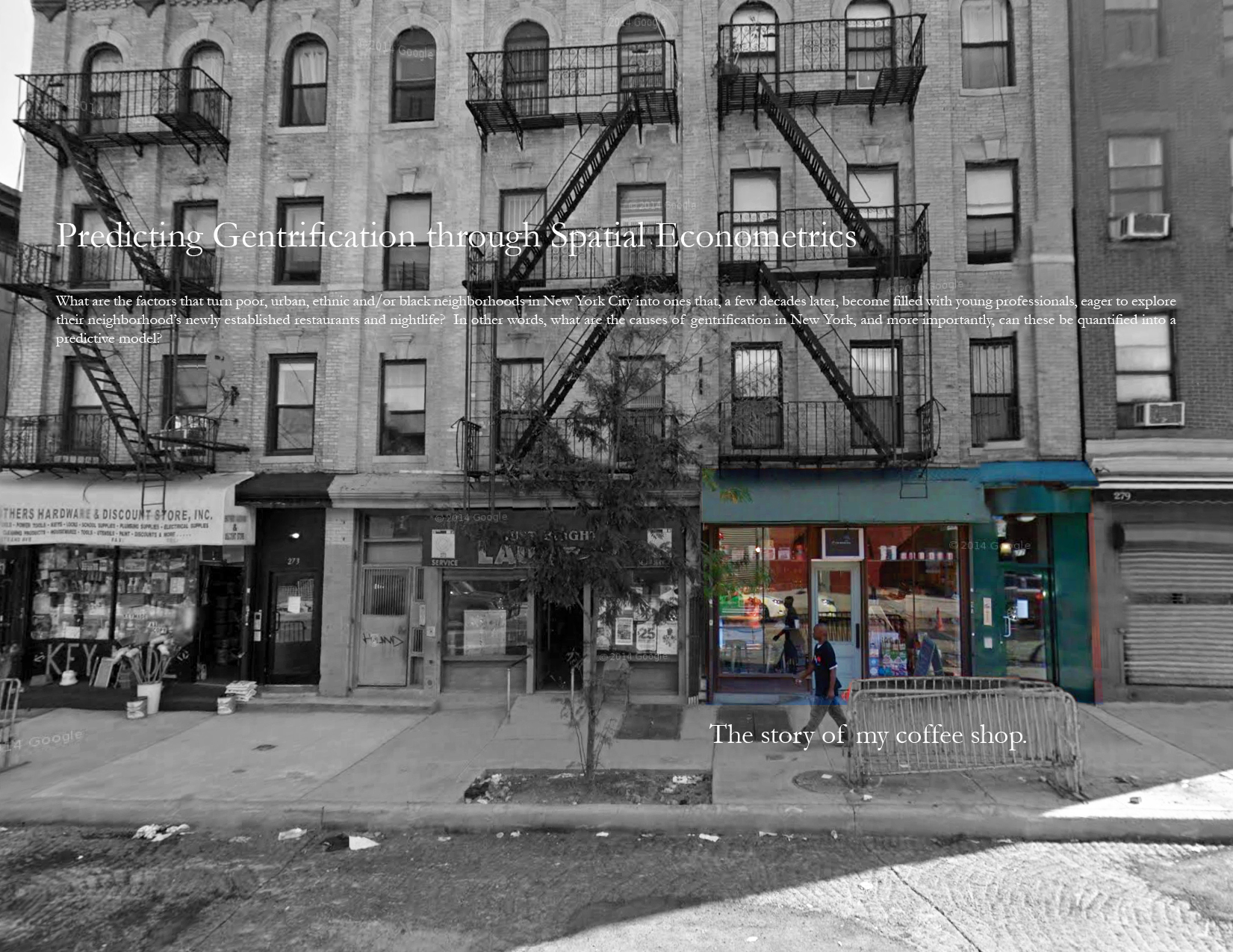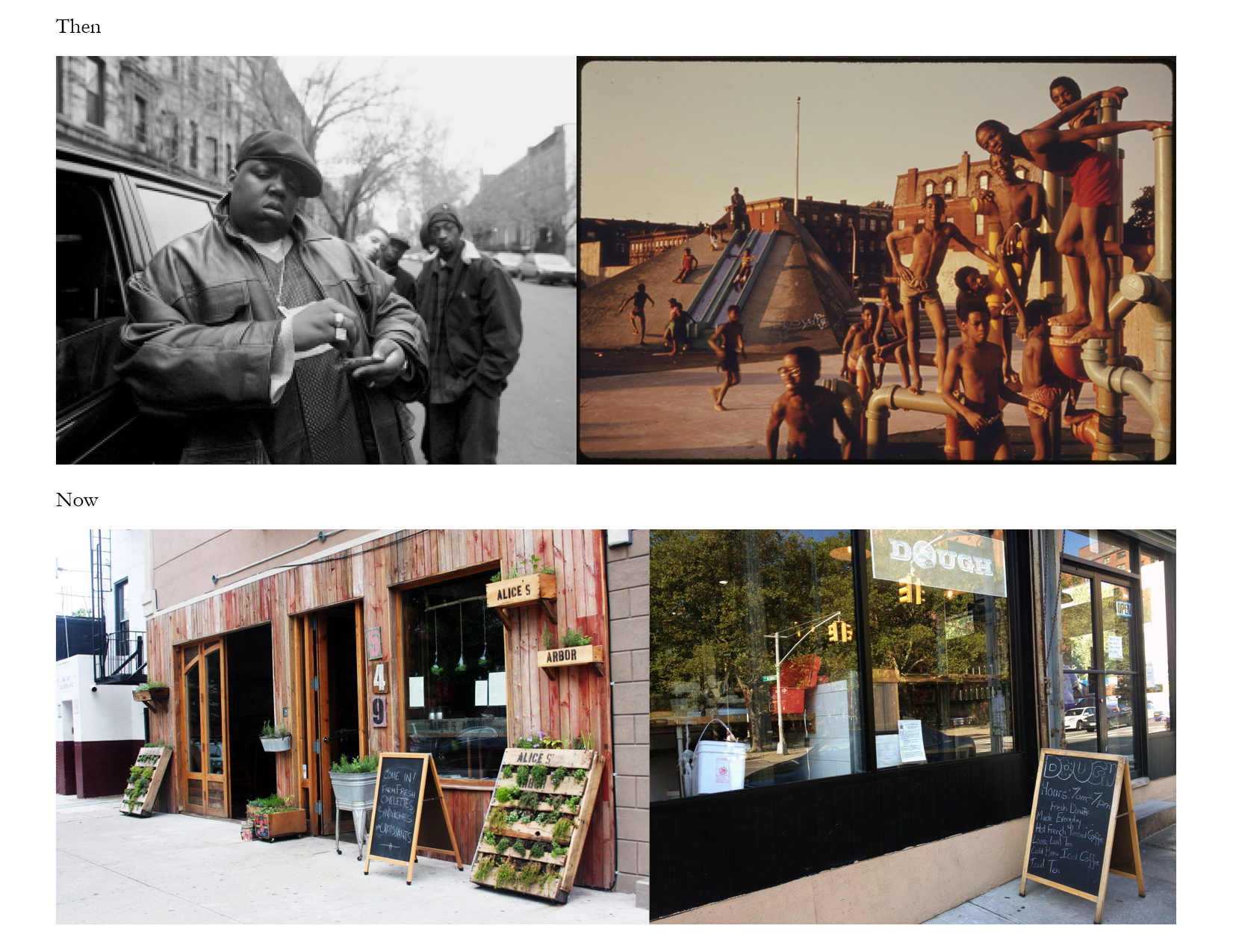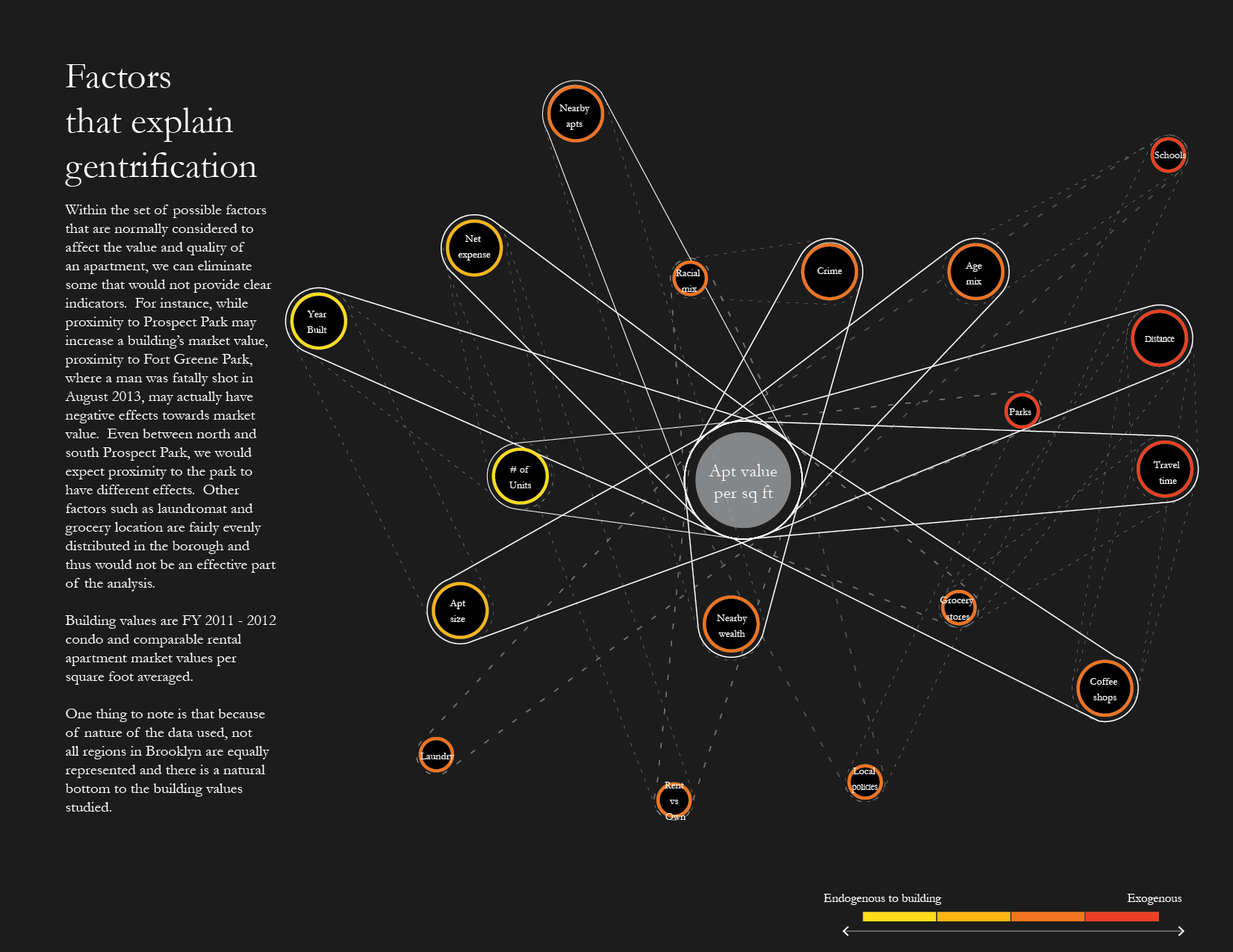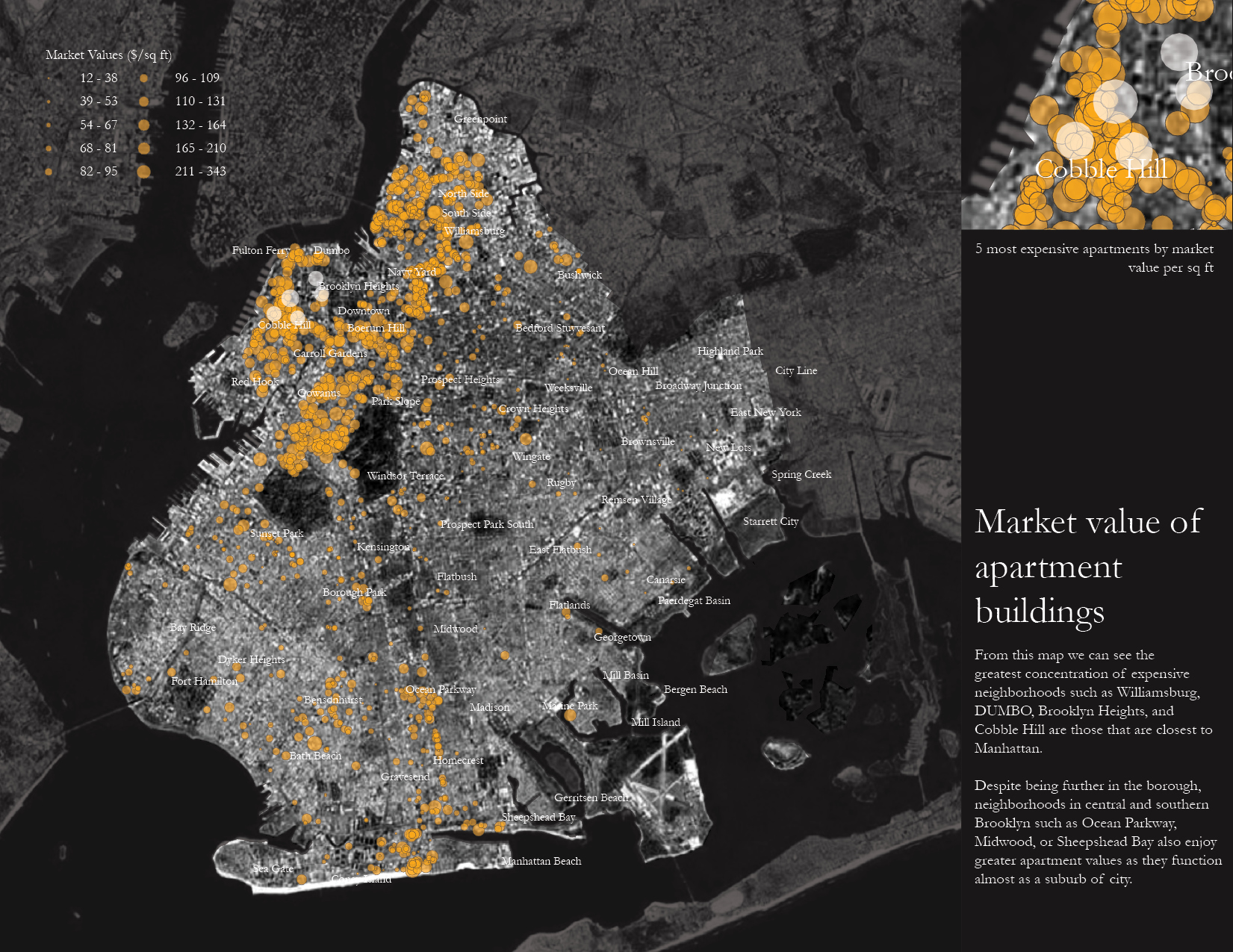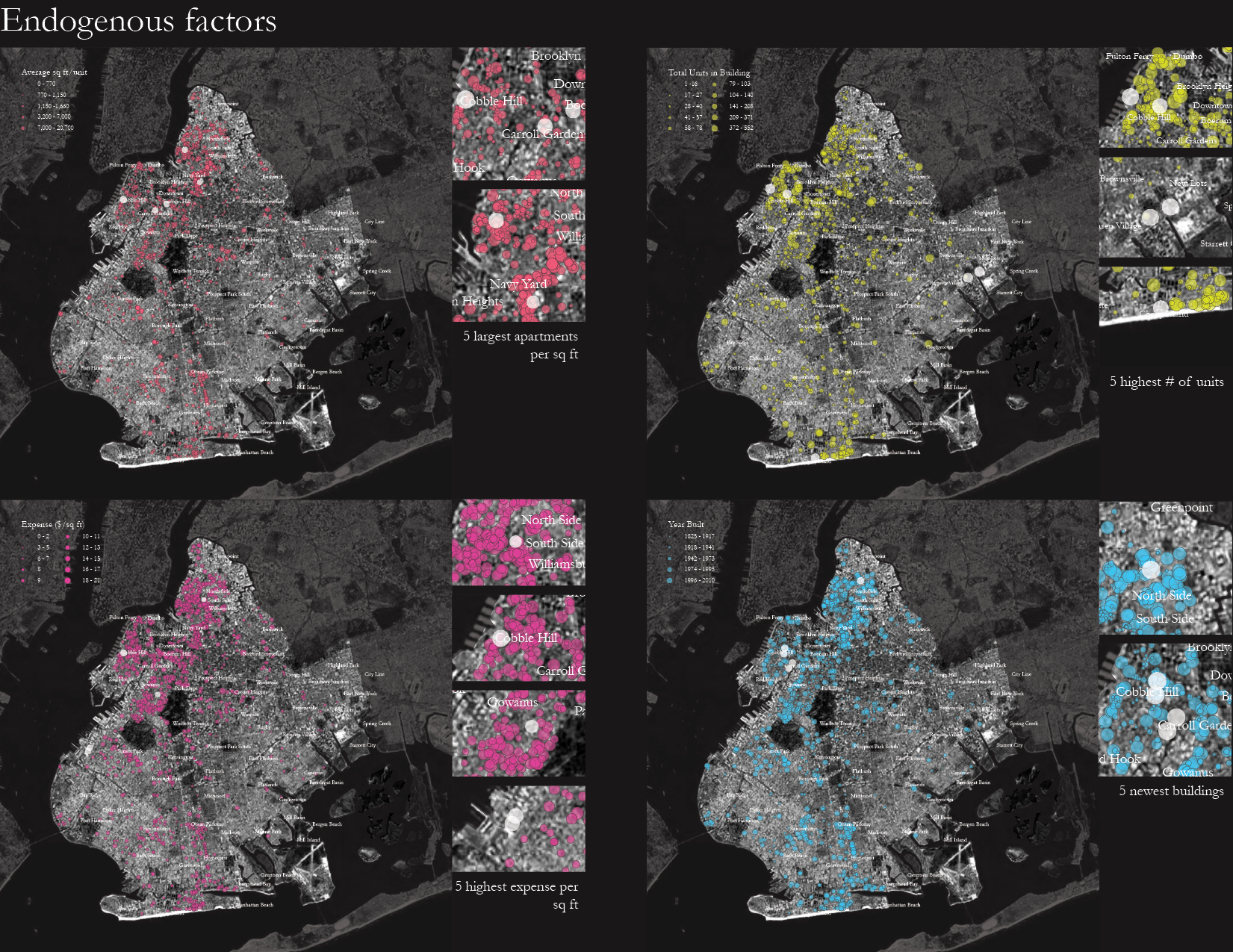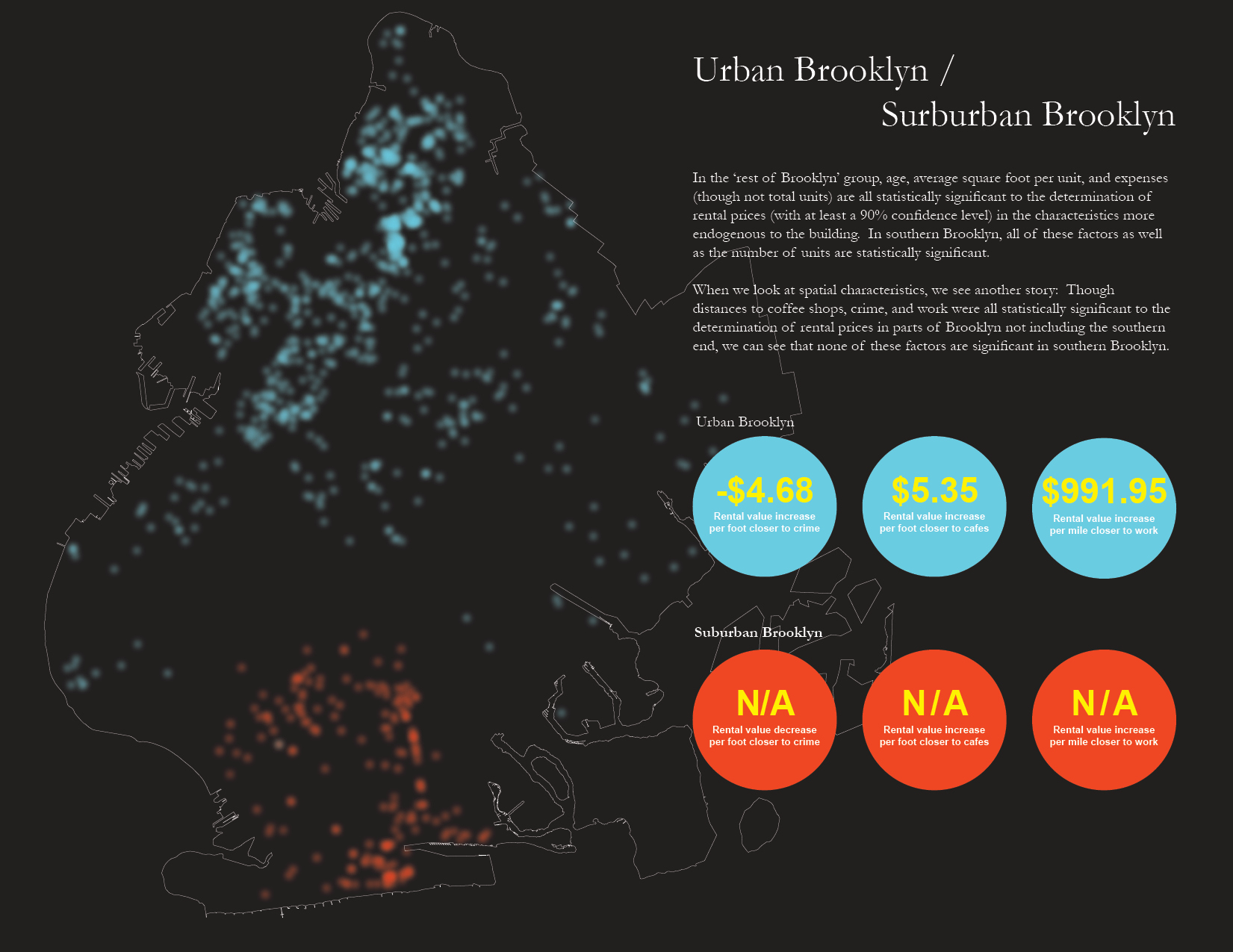
From Biggie to Brunch: The Tale of Two Cities in Brooklyn
What are the factors that turn poor, urban, ethnic and/or black neighborhoods in New York City into ones that, a few decades later, become filled with young professionals, eager to explore their neighborhood’s newly established restaurants and nightlife? In other words, what are the causes of gentrification in New York, and more importantly, can these be quantified into a predictive model?
I look at property values in Brooklyn diverse set ethnic and income distribution. In Brooklyn, unlike in the vast proportion of Manhattan, many neighborhoods are still undergoing a transformation into gentrified neighborhoods. Looking at the differences in characteristics across neighborhoods may give us a better understanding of how neighborhoods evolve.
What if there is a suburban Brooklyn not affected by the draw of amenities?
One crucial concept we consider is the existence of two different rental conditions in Brooklyn, i.e. the factors that we consider have different effects on different groups. From this study, we can see that southern Brooklyn contains a cluster of expensive apartments that is separate from the rest of the expensive properties within close proximity to Manhattan. In the ‘rest of Brooklyn’ group, age, average square foot per unit, and expenses (though not total units) are all statistically significant to the determination of rental prices (with at least a 90% confidence level) in the characteristics more endogenous to the building. In southern Brooklyn, all of these factors as well as the number of units are statistically significant.
When we look at spatial characteristics, we see another story: Though distances to coffee shops, crime, and work were all statistically significant to the determination of rental prices in parts of Brooklyn not including the southern end, we can see that none of these factors are significant in southern Brooklyn.
